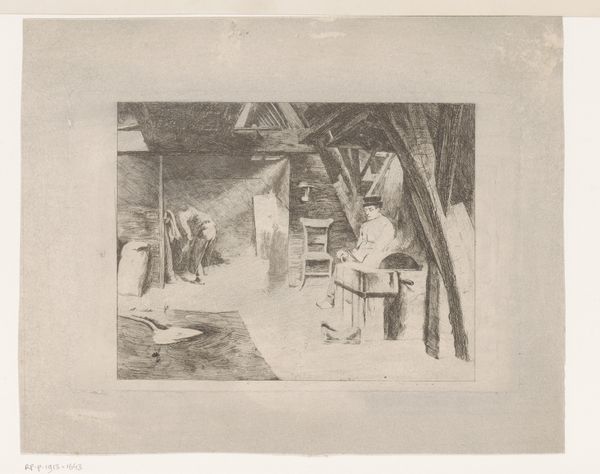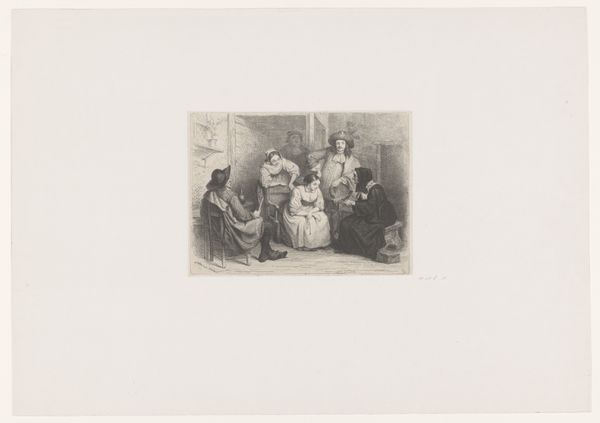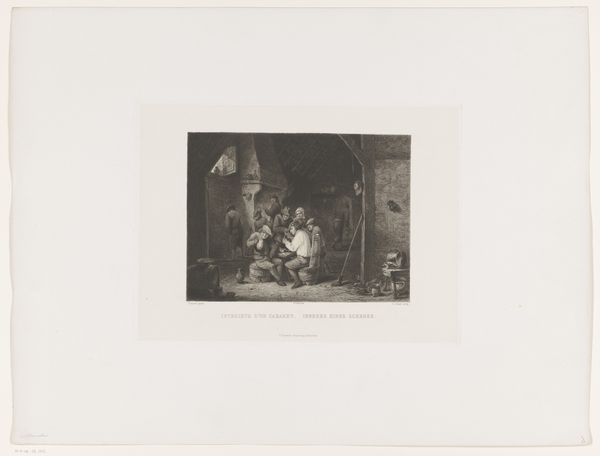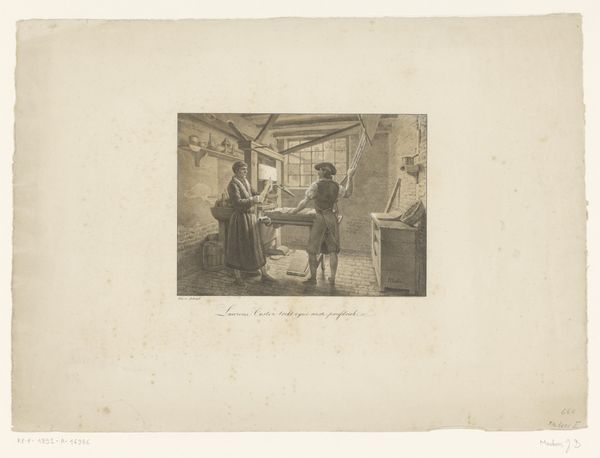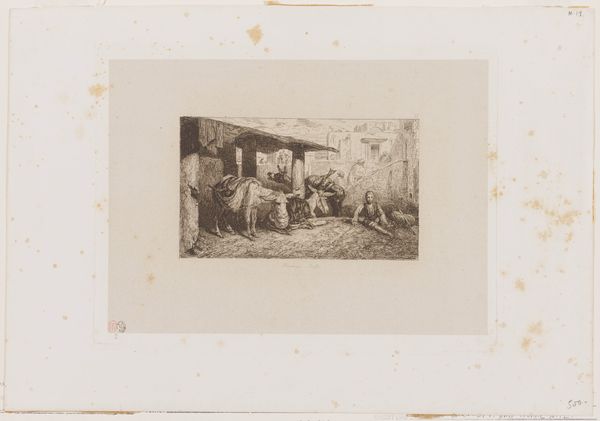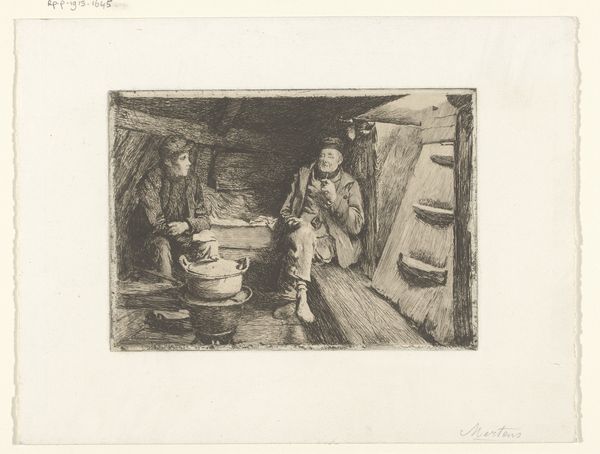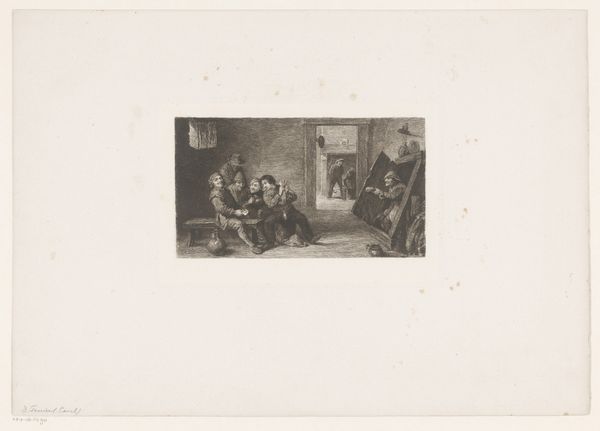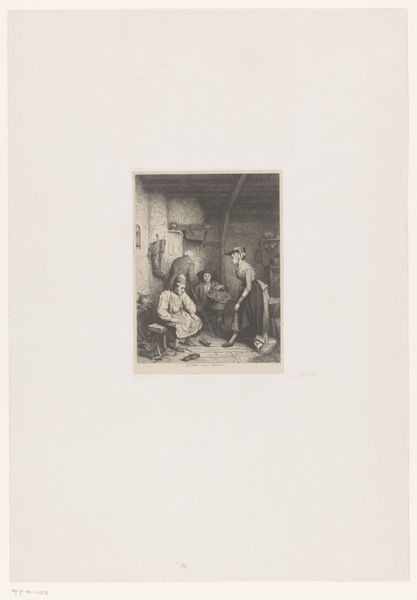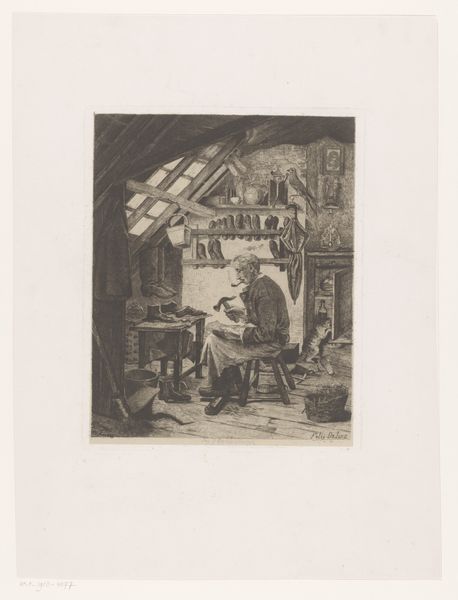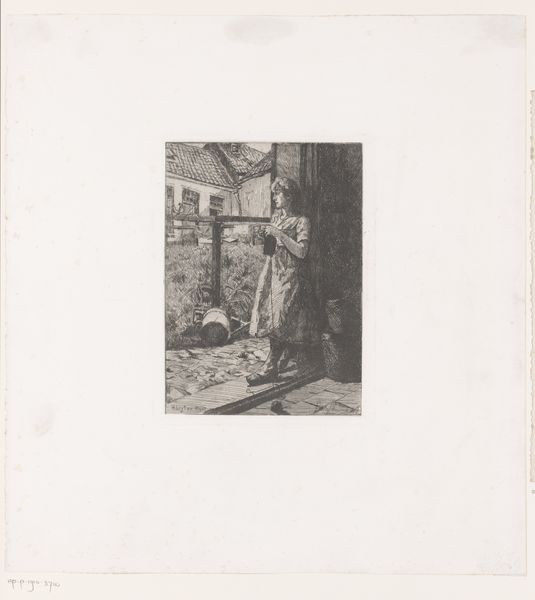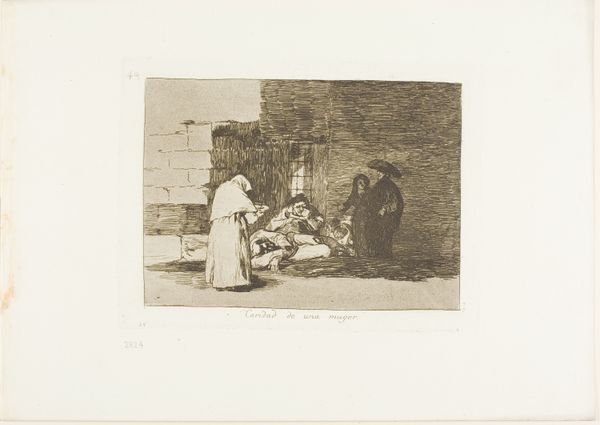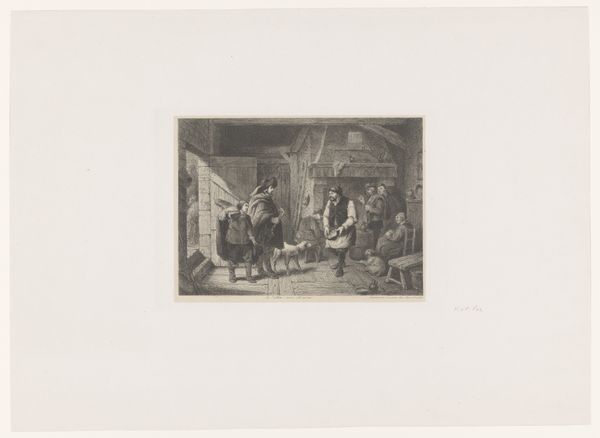
drawing, print, etching, paper
#
portrait
#
pencil drawn
#
drawing
# print
#
etching
#
paper
#
genre-painting
#
realism
Dimensions: height 239 mm, width 313 mm
Copyright: Rijks Museum: Open Domain
Curator: Welcome. Before us we have "Twee mannen rusten in het ruim van een schip" which translates to "Two men resting in the hold of a ship," created by Charles Mertens between 1875 and 1913. Editor: It's evocative. There’s a real stillness, a sense of lived-in intimacy within the ship’s hull, rendered entirely in grays. The details of the etched lines suggest wear, labor. Curator: Precisely. Mertens' choice of etching as a medium speaks volumes about accessibility and dissemination. Prints allowed wider circulation of imagery, particularly scenes of everyday life like this genre painting. Think about who could own such an image, how it could travel. Editor: And the act of etching itself! It demands a hands-on engagement with materials. The plate, the acid, the pressure of the press—it highlights the labor-intensive process behind even seemingly simple depictions of leisure. Notice the material accumulation depicted like the men’s worn clothing, or the ship’s construction itself. Curator: Good point. Considering Mertens' historical context, these depictions of maritime labor likely resonated with a changing societal view of workers. Realism as an art movement aimed to honestly portray daily life and I would consider this in light of the Realism movement’s interest in honest depiction. The choice of subject reflects this burgeoning social consciousness. Editor: Exactly. These were prints designed for mass consumption at a time when art production became a real commercial market. To your point of honest depiction, do you notice how he doesn't overly romanticize their respite? It feels like honest labor is rendered honestly in kind. Curator: Yes, indeed. Furthermore, if we reflect on the cultural perception of seafaring life during this period, how was the production of maritime imagery influenced by colonial narratives and economic structures dependent on shipping? Editor: Considering these layers and meanings that have arisen in only a few moments, there's so much to unpack in this understated scene of quietude! Curator: The artwork certainly provides fodder for materialist consideration, inviting reflection on maritime history and its broader socio-political landscape.
Comments
No comments
Be the first to comment and join the conversation on the ultimate creative platform.
